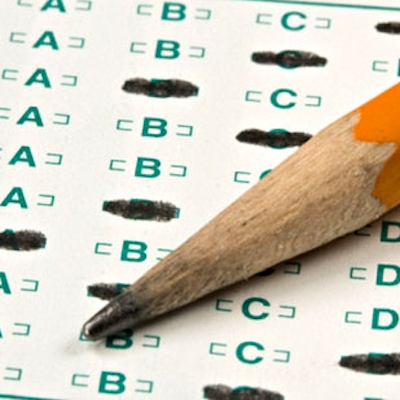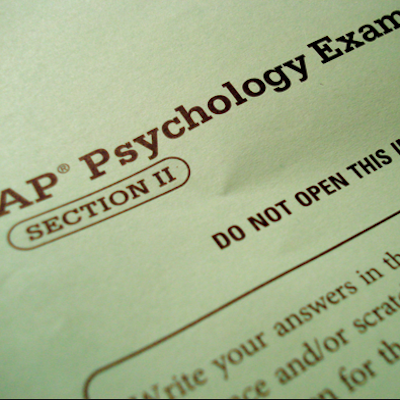Guest MINDSETTER™ Zurier: The Best Way To Ensure Quality Public Education For All Rhode Islanders
Sunday, February 21, 2016
At the end of last year, the Governor convened a working group to review the education aid funding formula enacted in 2010. While celebrated at the time as a major step forward in providing a quality education for all, the formula generated significant controversies in recent years. Many groups claimed their needs were not met, and some of them, such as school districts and charter schools, found themselves on the opposite sides of debates in the General Assembly.
The working group, comprised of around thirty citizens with differing levels of involvement in education and finance, met eight times over a span of slightly more than two months. They reviewed a daunting amount of data involving highly complex issues. They ultimately approved a report that identified areas of concern (special education, English language learner education and charter school funding) that needed to be addressed, but without providing specific recommendations, due to a lack of time and an instruction to avoid proposals that required additional State funds.
Based on the working groups report, the Governors budget included adjustments to the funding formula that responded to the three concerns identified by the working group. The budget is now before the General Assembly for review.
GET THE LATEST BREAKING NEWS HERE -- SIGN UP FOR GOLOCAL FREE DAILY EBLASTViewed from this perspective, we can thank the working group for their efforts, which can support improvements to our schools. We must be careful, however, not to view these incremental improvements as anything more than a promising start. If we want to make the leap of progress we see in other states such as Massachusetts in the 1990's, we need to enact a judicially enforceable Constitutional right to education, bringing our State into the civil rights mainstream while creating a new route for educational equity for our children.
The controversies that have arisen from the funding formula largely derive from the political compromises necessary to achieve its passage. When the General Assembly dictated a “revenue neutral” outcome, the formula that resulted excluded from its coverage operating and other expenses, which comprise more than 20% of the typical programs budget. This compromise left school districts entirely on their own to cover these expenses exclusively with local funds. The current formulas student success factor addresses additional needs only in terms of poverty status, excluding from the formula special education and English language learner status which clearly increase the cost of education, and which are not well-correlated with poverty. In order to protect the expectations of wealthy districts, a state share factor was adjusted to ensure that every district would receive State funding for children in poverty regardless of community wealth, so that communities that are three, four or even five times the State average of property wealth per student receive State aid, while the poorest communities pay 100% of the tab for operating and other vital expenses.
This combination of compromises produces anomalous results. For example, Pawtucket and Woonsocket have student populations that far exceed the State average for children in poverty, learning the English language and special education needs. This would suggest that the school budgets per child for these communities would (and should) be significantly more than the State average, but the opposite is true - the average budget per student in these two communities is more than $2,000 below the State average. Rhode Island’s overall education performance is at best mediocre, and the achievement of our Hispanic students is at the bottom of the national rankings.
For an example of success, Rhode Island can look over its border to Massachusetts, which has the best public school system in the country as measured by those tests. The Bay States rise from mediocrity to excellence provides an instructive example for Rhode Island to follow. In the early 1990's, Massachusetts had a middling school system, not too different from ours in achievement. This chart (which is for 8th grade mathematics achievement) shows how Massachusetts (green), Rhode Island (red) and the United States as a whole (blue) performed since then:
The great leap Massachusetts took in the 1990's was built on the foundation of the Education Reform Act of 1993, which in turn was enacted months after that states Supreme Judicial Court ruled that the states Constitution contained a judicially enforceable right to education. Based on this finding, the Massachusetts Legislature had the political cover to fashion a grand bargain between taxpayers, educators and school officials all to give up something in favor of the children.
Ironically, Rhode Island had a similar court case pending at the same time. In 1994, the Superior ruled (in a case brought by Pawtucket, Woonsocket and West Warwick) that our States Constitution had such a right to education, but the Rhode Island Supreme Court reversed this ruling in 1995, preventing our General Assembly from having the political cover that supported our neighbor’s quantum leap. Since then, Rhode Island has struggled to maintain its mediocre position relative to the rest of the country, never mind “moving up” in the national standings.
From this perspective, Rhode Island’s best option is to approve an amendment to the Constitution that will codify public education as a basic human right. Once we achieve that, the General Assembly will have the standing to put children first, and fashion a “grand bargain” of targeted resources tied to accountability standards that will allow us to emulate our neighbor. Making incremental improvements to the funding formula from year to year will no doubt bring improvements, but we must not allow ourselves to become satisfied with small steps taken over decades when the education of today’s children is being determined in classrooms today and every day of every year. We cannot afford to lose another year, never mind another generation, to the compromise and comfort of incremental change.
Sam Zurier is a member of the Providence City Council, representing Ward 2.
Related Slideshow: 10 RI State Education Rankings
Related Articles
- Guest MINDSETTER™ Rep. Carson: RI Should be Vigilant About Protecting Waterways
- Guest MINDSETTER™ Santos: The Ten Commandments of Capitol Hill
- Guest MINDSETTER™ Rep. Tobon: The Benefits of Buying Locally
- Guest MINDSETTER™ Tony Jones: MLK - The Doctrine of Non-Violence from Birmingham Jail
- Guest MINDSETTER™ Jim Vincent: Lessons From The State of the Union
- Guest MINDSETTER™ Hewett: Dear voters in State Senate District 11
- Guest MINDSETTER™ Tom Kenney: Lies, Insinuations, Exaggeration
- Guest MINDSETTER™ Mundy: The Opioid Crisis & Our Veterans - We Must Do Better
- Guest MINDSETTER ™Bobby Kells, Jr: Time to Get Real About Refugees
- Guest MINDSETTER™ Proudfoot: Providence’s High Schools Must Do Better
- Guest MINDSETTER™ Larry Girouard: It’s Working! What’s Working?
- Horse-Trading or Hostage-Taking? H. Philip West Jr, Guest MINDSETTER™
- Guest MINDSETTER™ Rep. Solomon: The Sales Tax Holiday Weekend
- Guest MINDSETTER™ Robert Billington: Welcome Home Pawtucket Red Sox
- Guest MINDSETTER™ Santos: RhodeWorks Amnesty for East Bay & Aquidneck Island
- Guest MINDSETTER™ Rep. Morgan: GOP Fought to Make Terrible Toll Bill Better
- Guest MINDSETTER™ Rep. McKiernan: Car Tolls Benefiting General Fund Will Not Happen
- Guest MINDSETTER™ Sen. Sheehan: Ethics Reform - or a Festering Status Quo
- Guest MINDSETTER™ Forleo: CCRI About to Undergo Political Takeover
- Guest MINDSETTER™ Tony Jones: Let’s Utilize Cannabis to Help Pay for RI’s Roads
- Guest MINDSETTER™ Rep. Ruggiero: A ‘Victory Day’ For RI Taxpayers & Small Businesses
- Guest MINDSETTER™ Santos: Governor Raimondo’s Toll Road to Washington
- Guest MINDSETTER™ Jared Moffat: Tax Marijuana in RI, Not Medicine
- Guest MINDSETTER™ Fitzpatrick: What Buddy Cianci Taught Me
- Guest MINDSETTER™ Rep. Ruggiero: RhodeWorks - The Right Route to a Stronger Economy























